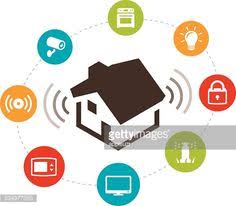 Future staffing demand will force industry to rethink care strategies. According to BLS, the industry will need 4.5 million care workers by 2029 to meet the demands of older adults. According to an Argentum staffing report, in 2025 alone another 347,000 caregivers are needed for memory care. The home care and senior living industries draw from the same population of prospective workers. Home care and home health care demand will drive 21% job growth by 2033, but 59% of agencies will experience shortages. What else will help address care needs?
Future staffing demand will force industry to rethink care strategies. According to BLS, the industry will need 4.5 million care workers by 2029 to meet the demands of older adults. According to an Argentum staffing report, in 2025 alone another 347,000 caregivers are needed for memory care. The home care and senior living industries draw from the same population of prospective workers. Home care and home health care demand will drive 21% job growth by 2033, but 59% of agencies will experience shortages. What else will help address care needs?
AI Agents help with home care tasks, including staying awake on an overnight shift. Today AI software is available to transcribe calls and give feedback to franchise owners and care workers on how the care can be improved. In some small home apartments, the home care worker is with the care recipient overnight and at risk of falling asleep – for example, an AI agent can interact with the caregiver on a pre-defined timely basis. If there is no response, software can contact the supervisor.
AI agents increasingly will respond in the language of the staffer or caller. Language barriers between home care workers, care recipients and families can be a constraint on the availability and quality of care provided, for example, impairing their comprehension, decreasing adherence rates, and diminishing satisfaction.
AI agents AI can help provide automatic check-ins or assist with generating care plans. There are organizations today that are using AI such as Cairns.ai to blend ambient sensing with call center oversight, interacting with the care recipient in a way that sounds human. In addition, it is increasingly likely that care plans will be generated or updated from pre-existing data about a care recipient, such as a health record, saving data entry time.
Wellness calls conducted between visits will be mined for predictive analytics. Collecting voice samples for each call enables data from the call to serve multiple purposes. For example, capturing OASIS notes for Medicare with a payment tool Corpay One (previously Roger.ai) also enables review of these notes that can also be fed into WellSky’s Home Health Care Insights predictive analytics.
AI agents (or chatbots) will be friendly, have names, and be engaged. Experiments have shown that AI chatbots can exhibit empathy, particularly in healthcare settings – where empathy for the patient may be lacking when questions are answered. In home care conversations, the chatbot can also have a name – where Alan sounds like Alan or Clare can become a friend of the care recipient. Within the next few years, humanoid robots may have evolved to the point where they become cost-effective and useful in delivering care in the home. In addition, Nvidia and Foxconn are piloting an in-hospital robot that to help address a global nursing shortage.
Conversational AI will play a bigger role with care recipients over time. Too much of the time, voice technologies are simply responding to a request, rather than retaining context of the question and making follow-up suggestions. Just the way smartphones and smart watches are in growing use by older adults, tools like ChatGPT, now with memory of previous chats, will help older adults who have follow-up questions about their as discussed in a previous chat.
Download the report here

 Future staffing demand will force industry to rethink care strategies. According to BLS, the industry will need
Future staffing demand will force industry to rethink care strategies. According to BLS, the industry will need